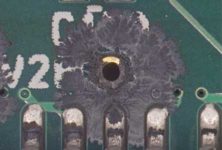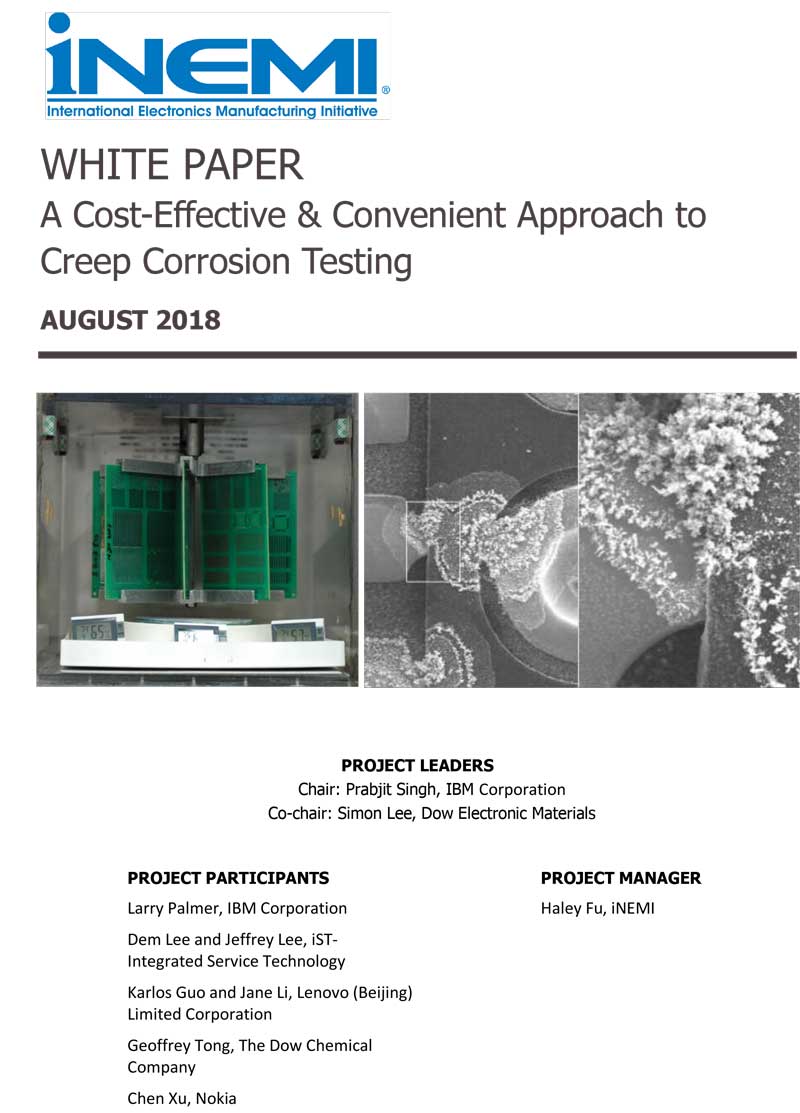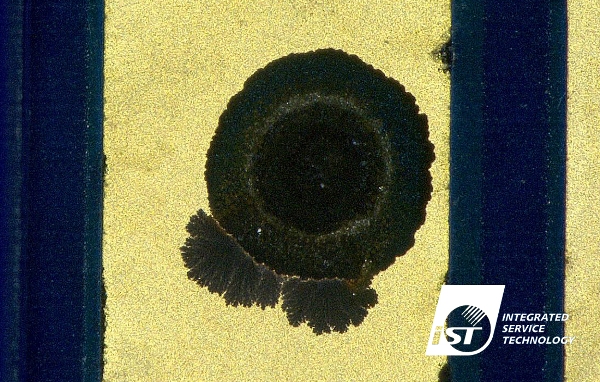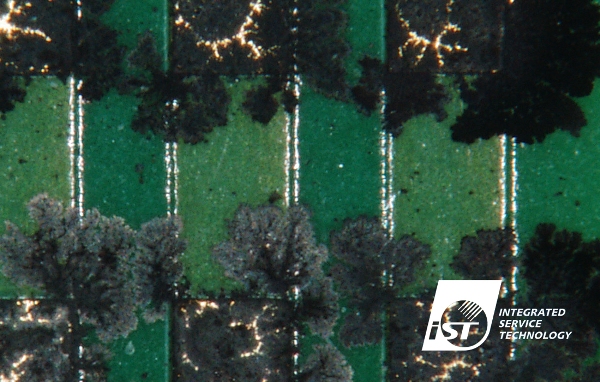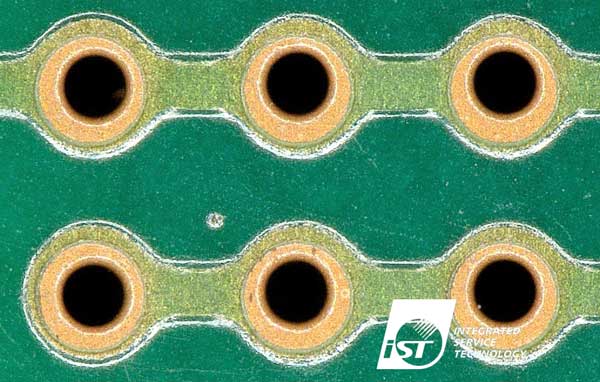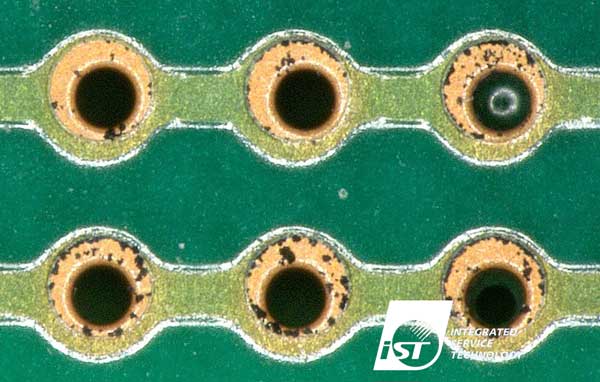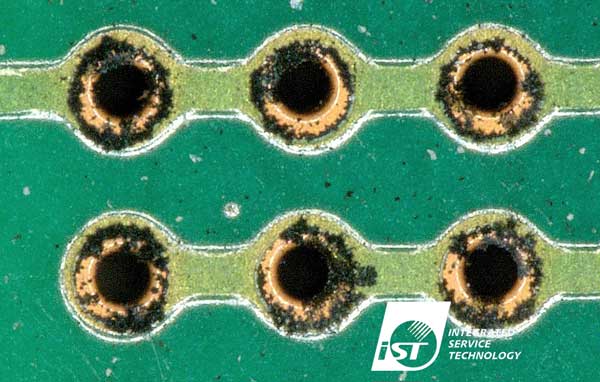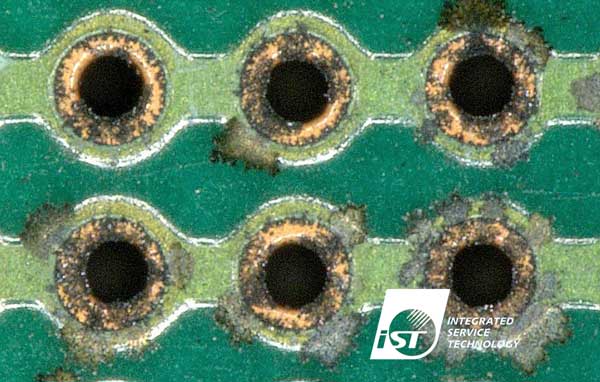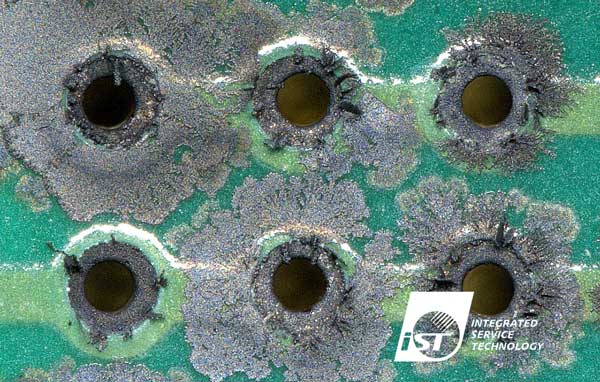Issued Date:2019/9/5Creep Corrosion
Issued By:iST
Do you know that sulfur-bearing gaseous contaminants could potentially cause the creep corrosion occurrence?
How to effectivity verify the creep corrosion failure occurrence?
Due to the proliferation of Information Technology (IT) equipment applications, including Artificial Intelligence (AI), Big Data, 5G, Internet of Things (IoT) and Edge Computing in recent years. Therefore, the hardware reliability of IT equipment is paid more attention in the industry. With the more and more severe environmental pollution, the air quality will also directly or indirectly influence the life of IT equipment wherever indoor and outdoor.
In general, the hardware reliability of IT equipment was easily affected by corrosive gases, moisture, contaminants and particulate matter. It can potentially cause the electrical short failure due to creep corrosion occurrence on corrosion sensitive components, Print Circuit Board (PCB) and PCB assembly. Therefore, it is very important to verify the robustness against creep corrosion occurrence for the future electronics.
creep corrosion
Creep corrosion is a kinds of failure mode of sulfur corrosion, the typical feature of creep corrosion can be observed from PCB (Refer to Figure 1) and leadframe packages (Refer to Figure 2). In environments high in sulfur-bearing gaseous contamination, the major corrosive product; cuprous sulfide (Cu2S) was formed due to the bare copper exposure. The solid corrosion products migrated over a surface of soldermask and molding compound without the influence of an electric field. Besides, the extent of creep corrosion may be so high as to electrically short circuit adjacent pads and traces, causing the electrics to malfunction which be known as the creep corrosion failure.
1.How to verify the creep corrosion? - Traditional method: Mixed Flowing-Gas (MFG)
MFG is a traditional testing method to verify the creep corrosion. There are many controllable parameters, including temperature, relative humidity, corrosive gases type (e.g. H2S, Cl2, NO2 and SO2…etc.), concentration and gaseous flowing rate…etc. Besides, the corrosive gases of internal cabinet were continually replaced with fresh corrosive gases. Because many controllable parameters, complex equipment setup and continuous constant-flowing corrosive gases. Therefore, MFG has high availability to simulate the field environment corrosion. However, the downside of the MFG test is the high cost of the test, and also cannot be adopted widely for all suppliers in the industry.
2.Could we verify the creep corrosion using the ASTM B809 Flower of Sulfur (FoS)?
The traditional FoS testing of ASTM B809 standard is a humid sulfur vapor test. Because less controllable parameters (temperature and relative humidity), simple equipment setup and only one single corrosive gas (sulfur vapor, S8). FoS test is relatively inexpensive, short testing duration, compared with MFG test. However, the downside of the FoS test is the limited availability to simulate the field environment corrosion.
Besides, there is only single corrosive gas (sulfur vapor, S8) which cannot drive the mechanism of creep in metal corrosion. Only slight migration of corrosive products with limited metal area was observed even in high relative humidity as testing condition. There is no feature of creep corrosion occurrence. (Refer to Table 1)
Don’t fall for it!
The traditional FoS testing of ASTM B809 standard cannot verify the creep corrosion!
The traditional FoS testing of ASTM B809 standard originally intended for detection of porosity in metal coatings. Therefore, the major failure mode of metal corrosion is pitting/pore corrosion, not creep corrosion.
3.A cost-effective and convenient method: The new FoS testing of iNEMI White Paper
To consider that traditional testing method: MFG is expensive, long testing duration; The traditional FoS testing of ASTM B809 standard is relatively inexpensive, short testing duration, but cannot verify the creep corrosion.
In the light of the above, the International Electronics Manufacturing Initiative (iNEMI) has published a White Paper regarding the creep corrosion verification in August, 2018. (Refer to Figure 3) The iNEMI project team, including the leading 3rd party testing lab for electronics verification: iST- Integrated Service Technology and international branding system house: IBM, Lenovo, Nokia…etc. have analyzed the reason of creep corrosion occurrence and also developed a cost-effective and convenient testing method: iNEMI FoS test which is sufficiently well developed for consideration as an industry standard qualification test for creep corrosion To hope that iNEMI FoS test can assist the all suppliers to find out the prevention action and solution of creep corrosion failure occurrence in the industry.
4.What is the different between iNEMI FoS and ASTM B809 FoS?
iNEMI FoS test is based on the ASTM B809-95 standard improvement. There are several different points as below:
- Relative Humidity:To include three relative humidity levels (low, middle, high) as testing condition, effectively present the moisture-sensitive vs. various surface finish materials.
- Gas Flowing Rate:To adopt the paddle wheel design with gas flowing which can increase the collision frequency between the corrosive gas and testing sample to effectively increase the corrosive reaction rate. Besides, the testing cycle time can be reduced as well as the equilibrium time.
- Chlorine Gas:Cl2 existing can drive the mechanism of creep in metal corrosion. Therefore, it can effectively duplicate the creep corrosion occurrence.
- Sample Pre-Treatment:Pre-baking with nitrogen flowing may reduce the influences of Volatile Organic Compounds (VOCs) effect on corrosive reaction rate during FoS test.
Besides, the concentration of chlorine is very low (≤ 50 ppb) in international standards regarding MFG test. However the concentration of chlorine is high than 100 ppb in iNEMI FoS test. Therefore, iNEMI FoS test can effectivity verify the creep corrosion failure occurrence on electronics, compared with MFG test.
Table 1:Flower of Sulfur (FoS) Testing Comparison
5.Pass/Fail Criterion for Creep Corrosion in iNEMI FoS White Paper
iNEMI FoS test results can be divided into visual inspection and electrical. In general, the results of functional test were adopted to determine the final results is “Passed” or “Failed”. Only creep corrosion phenomenon can judge the testing results in visual inspection. The visual inspection criteria and rankings were shown as below: (Refer to Table 2.)
Table 2. Visual Inspection Criteria and Rankings in iNEMI FoS White Paper.
A leading 3rd party testing lab for electronics verification: iST- Integrated Service Technology can provide the various sulfur corrosion resistance tests, and also assess the corrosion simulation with long-term exposure at ISA S71.04-2013 G2, G3 severity level or field environment. Besides, we can adopt the customized design of experiment to assess the anti-sulfur corrosion life time through the accelerated test. If you need additional information, please kindly feel free to contact with Joshua Hsueh, at +886-3-579-9909 #6486 │ Email: WEB_GE@istgroup.com

